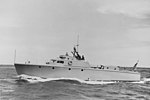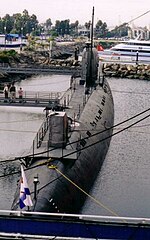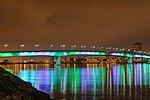San Pedro Bay (California)
Bays of CaliforniaBodies of water of Los Angeles County, CaliforniaBodies of water of Orange County, CaliforniaGeography of Long Beach, CaliforniaGeography of Los Angeles ... and 7 more
Geography of Los Angeles County, CaliforniaHistory of Long Beach, CaliforniaHistory of Los AngelesLos Angeles Harbor RegionPorts and harbors of CaliforniaSan Pedro, Los AngelesTerminal Island

San Pedro Bay is an inlet on the Pacific Ocean coast of southern California, United States. It is the site of the Port of Los Angeles and the Port of Long Beach, which together form the fifth-busiest port facility in the world (behind the ports of Shanghai, Singapore, Hong Kong, and Shenzhen) and the busiest in the Americas. The Los Angeles community of San Pedro borders a small portion of the western side of the bay, and shares the name. The city of Long Beach borders the port on the eastern side of the bay. The northern part of the bay, which is the largest part of the port, is bordered by the Los Angeles neighborhood of Wilmington.
Excerpt from the Wikipedia article San Pedro Bay (California) (License: CC BY-SA 3.0, Authors, Images).San Pedro Bay (California)
Pier J Way, Long Beach
Geographical coordinates (GPS) Address Nearby Places Show on map
Geographical coordinates (GPS)
| Latitude | Longitude |
|---|---|
| N 33.733333333333 ° | E -118.20083333333 ° |
Address
Pier J Way
Pier J Way
90802 Long Beach
California, United States
Open on Google Maps






